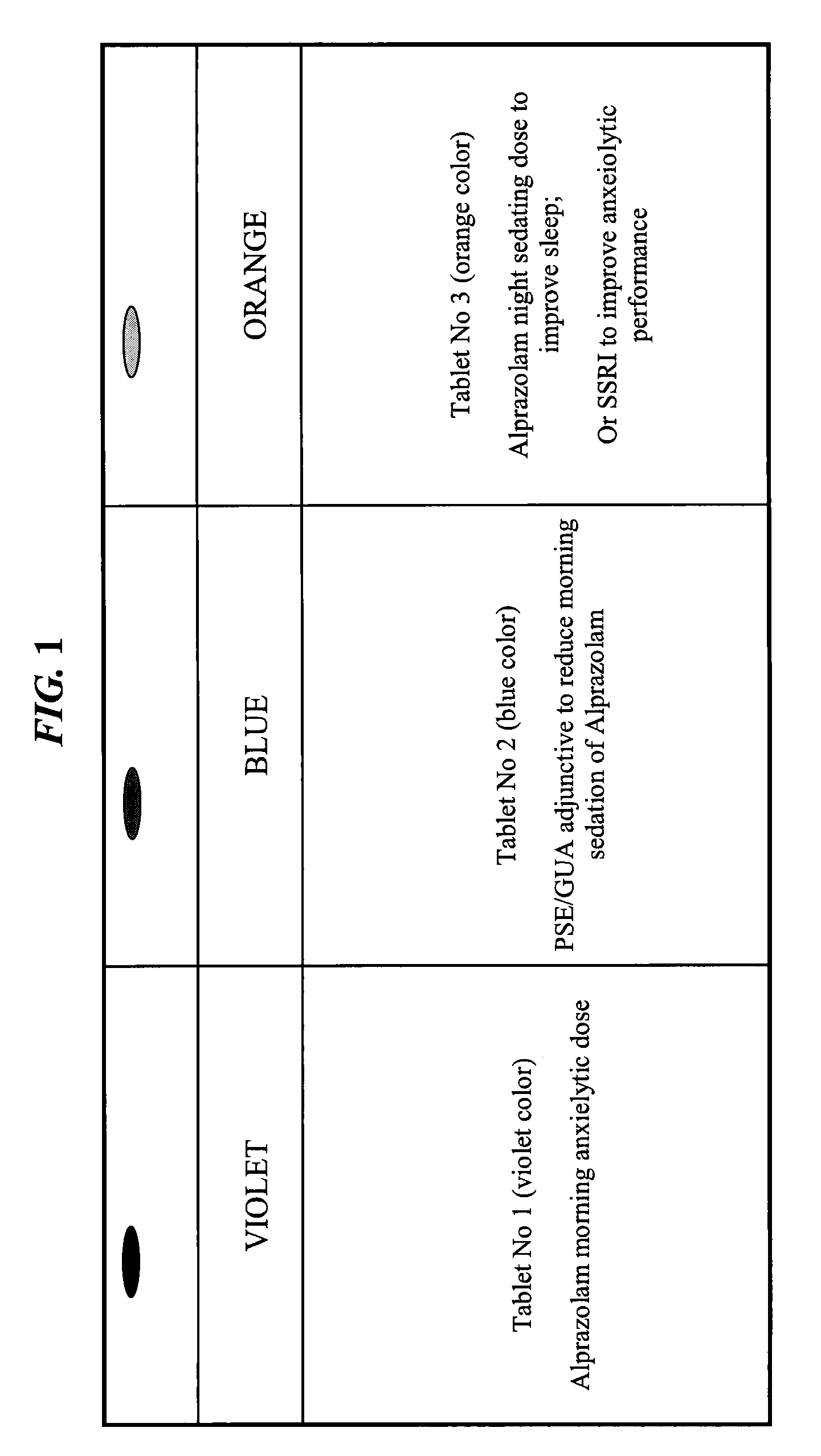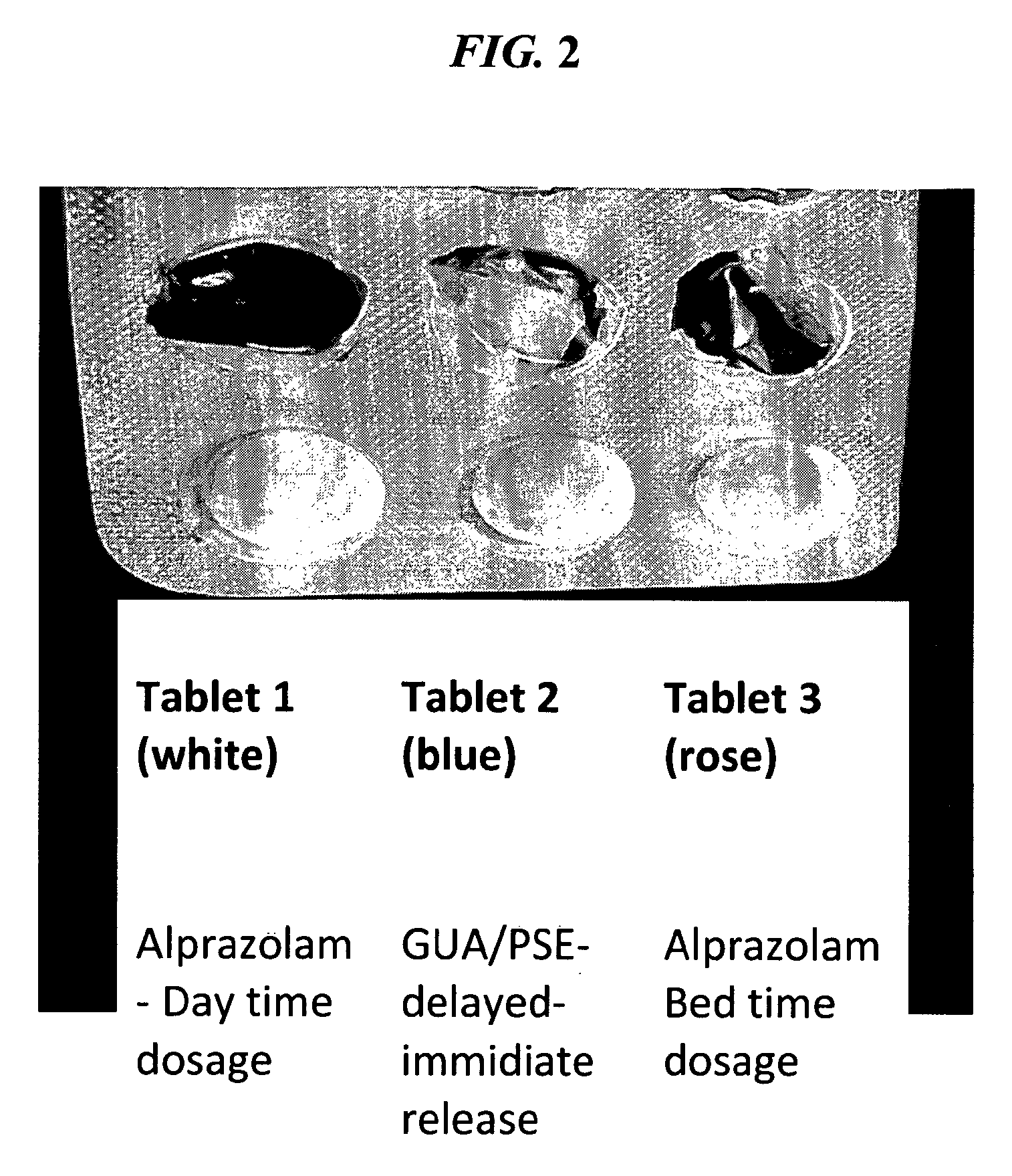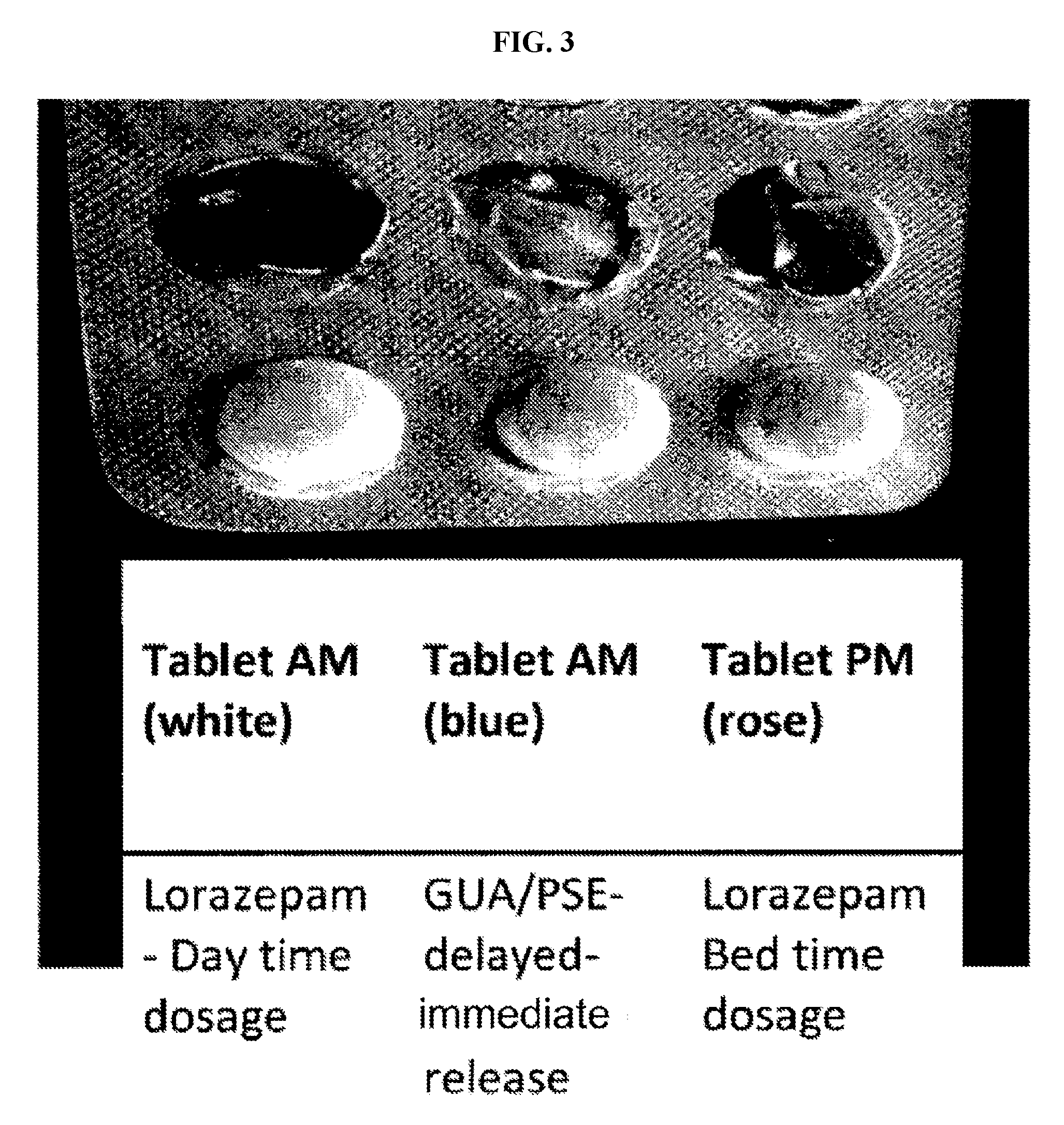CNS pharmaceutical compositions and methods of use
a technology of compositions and pharmaceuticals, applied in the field of pharmaceutical compositions, can solve the problems of increasing severe side effects, losing effectiveness, and generally worsening of side effects, and achieve the effect of reducing the side effects of the cns active agen
Active Publication Date: 2017-02-28
TARGIA PHARMA
View PDF3 Cites 2 Cited by
- Summary
- Abstract
- Description
- Claims
- Application Information
AI Technical Summary
Benefits of technology
The present invention relates to pharmaceutical compositions and methods for reducing side effects of drugs that act on the central nervous system (CNS). The compositions include a CNS active agent and at least two vagal neuromodulators that reduce side effects. The vagal neuromodulators, particularly mechanoreceptors, can reduce sedation, somnolence, and other side effects associated with CNS active agents, such as memory impairment and cognitive disorders. In addition, the invention provides a method for reducing the dependency or toxicity of addictive CNS active agents while maintaining their efficacy. This involves administering a lower dosage of the addictive agent and at least two vagal neuromodulators, with the mechanoreceptor stimulator released after the CNS active agent.
Problems solved by technology
Various pharmaceuticals, such as CNS active agents cause severe side-effects that generally worsen with increasing doses.
At high doses, many CNS active agents rapidly lose their effectiveness, induce pharmacologic tolerance, and cause increasingly severe side-effects.
Lowering the dose of the CNS active agent, however, does not address the problem because reducing the dose to prior levels results in significantly lower therapeutic efficacy.
Such combinations, however, are not without their problems.
More specifically, there is a clinical need to develop “non-sedating” GABA agonists for therapeutic activities where sedation-related side effect damages the quality of life and cognitive functioning of the patient, causing the patient to live most of the day in a daze and making it dangerous to drive vehicles and operate machinery.
However, attempts to develop these “non-sedative” benzodiazepines have failed as the prior art teaches that sedation effects of benzodiazepine treatment are linked to the GABA-inhibiting therapeutic activity.
In addition, attempts have been made to develop non-sedating anxiolytic drugs by chemical modification of the active agent, but no benzodiazepine receptor partial agonist has emerged as a viable alternative.
Method used
the structure of the environmentally friendly knitted fabric provided by the present invention; figure 2 Flow chart of the yarn wrapping machine for environmentally friendly knitted fabrics and storage devices; image 3 Is the parameter map of the yarn covering machine
View moreImage
Smart Image Click on the blue labels to locate them in the text.
Smart ImageViewing Examples
Examples
Experimental program
Comparison scheme
Effect test
example a
[0277]PHE-phenylephrine 65% (W / W); Microcrystalline cellulose 20%; Polyox 7.5%; and Croscarmellose sodium 7.5%.
example b
[0278]Epi-epinephrine 55% (W / W); Microcrystalline cellulose 25%; Polyox 10%; and Glyceryl monooleate 10%.
example c
[0279]PSE-pseudoephedrine 75% (W / W); Polyox 10%; Hydroxypropylcellulose 5%; and Croscarmellose sodium 10%.
the structure of the environmentally friendly knitted fabric provided by the present invention; figure 2 Flow chart of the yarn wrapping machine for environmentally friendly knitted fabrics and storage devices; image 3 Is the parameter map of the yarn covering machine
Login to View More PUM
| Property | Measurement | Unit |
|---|---|---|
| solubility | aaaaa | aaaaa |
| solubility | aaaaa | aaaaa |
| solubility | aaaaa | aaaaa |
Login to View More
Abstract
The present invention is directed to CNS pharmaceutical compositions and methods of use. The pharmaceutical compositions comprise a CNS active agent and preferably at least two vagal neuromodulators, one of which is a mechanoreceptor stimulator. The vagal neuromodulators are preferably in an amount sufficient to reduce a somnolence side-effect of the CNS active agent without changing its therapeutic efficacy / activity. The invention further encompasses a method of reducing CNS active agent side-effects. The method typically comprises oral administration of at least one CNS active agent to a patient at the conventionally accepted dose; and administration of at least two vagal neuromodulators to the patient so that at least one neuromodulator is administered or released from dosage form after the CNS active agent is administered and / or released.
Description
CROSS-REFERENCE TO RELATED APPLICATION[0001]This patent application is a continuation of U.S. patent application Ser. No. 12 / 860,846, filed Aug. 20, 2010 (published as US 20110054038), which is a continuation-in-part of International Application No. PCT / IB2009 / 000309, filed Feb. 20, 2009, which is based on and claims the benefit of U.S. Provisional Patent Application Ser. No. 61 / 030,141 filed on Feb. 20, 2008, the contents of each of which are hereby incorporated hereby by reference for all that it discloses.FIELD OF THE INVENTION[0002]The present invention is directed to pharmaceutical compositions in general, and more particularly to vagal afferent neuromodulators used in combination with a central nervous system (CNS) active agent as an adjunctive to reduce side effects associated with CNS agent without affecting its therapeutic efficacy.BACKGROUND[0003]Various pharmaceuticals, such as CNS active agents cause severe side-effects that generally worsen with increasing doses. Some c...
Claims
the structure of the environmentally friendly knitted fabric provided by the present invention; figure 2 Flow chart of the yarn wrapping machine for environmentally friendly knitted fabrics and storage devices; image 3 Is the parameter map of the yarn covering machine
Login to View More Application Information
Patent Timeline
 Login to View More
Login to View More Patent Type & Authority Patents(United States)
IPC IPC(8): A61K31/55A61K31/5377A61K31/00A61K31/19A61K31/137A61K31/554A61K31/5517A61K31/5513A61K31/27A61K31/09A61K45/06A61K33/30A61K31/155
CPCA61K31/137A61K31/00A61K31/09A61K31/27A61K31/5377A61K31/554A61K31/5513A61K31/5517A61K45/06A61K2300/00A61P25/00
Inventor GLOZMAN, SABINA
Owner TARGIA PHARMA
Features
- R&D
- Intellectual Property
- Life Sciences
- Materials
- Tech Scout
Why Patsnap Eureka
- Unparalleled Data Quality
- Higher Quality Content
- 60% Fewer Hallucinations
Social media
Patsnap Eureka Blog
Learn More Browse by: Latest US Patents, China's latest patents, Technical Efficacy Thesaurus, Application Domain, Technology Topic, Popular Technical Reports.
© 2025 PatSnap. All rights reserved.Legal|Privacy policy|Modern Slavery Act Transparency Statement|Sitemap|About US| Contact US: help@patsnap.com



